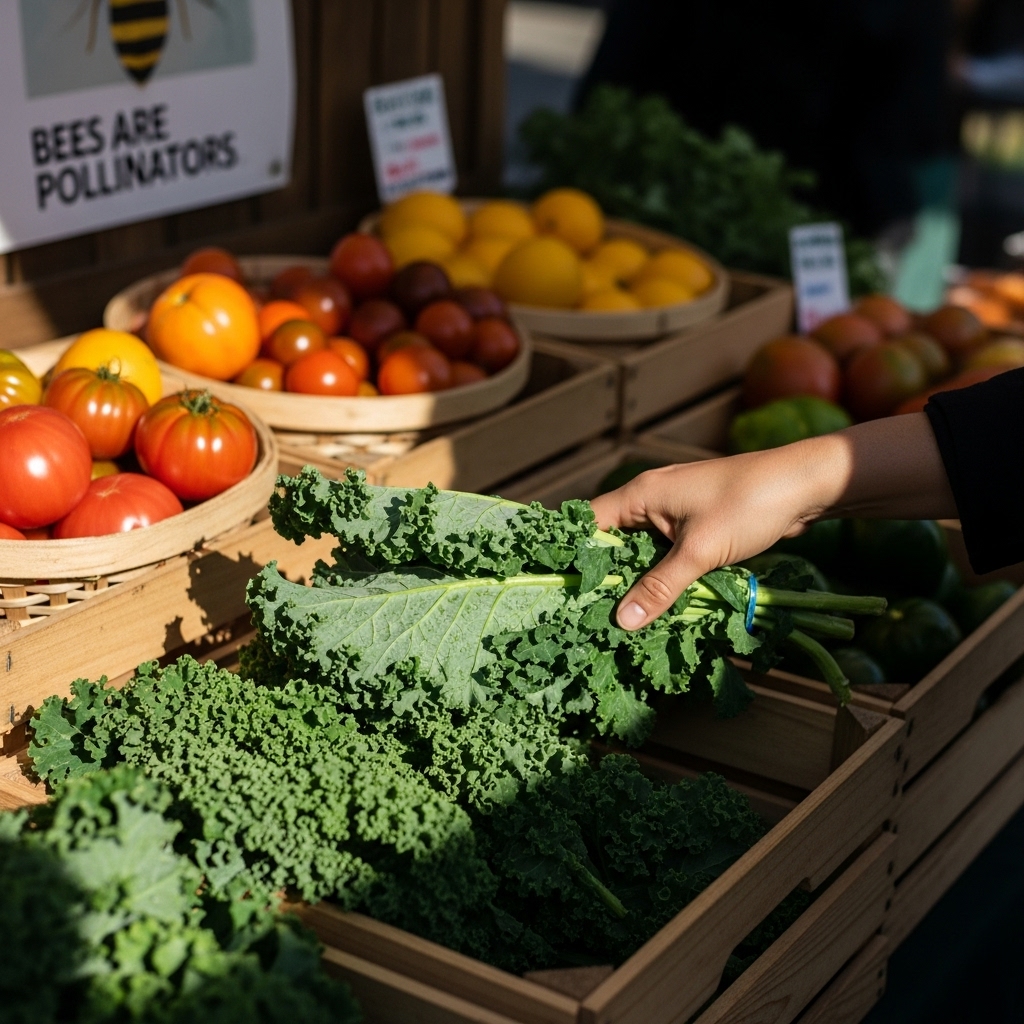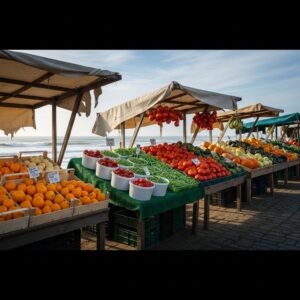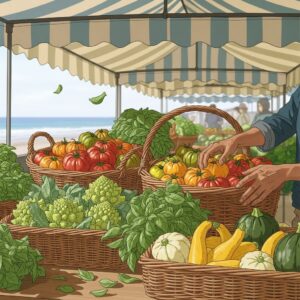Organic in Malibu isn’t just a label; it’s a lifestyle woven into the pace of the ocean and the canyon air. When you reach for certified organic produce at a fresh market in Malibu, you’re participating in a conversation the community has been having for decades—about soil, water, pollinators, and the way food should taste when it’s grown with patience. If you’ve ever brought home a bunch of kale that seemed almost mineral with freshness, or strawberries that perfumed your kitchen before you even washed them, you’ve felt the difference. Choosing organic here is about flavor, but it’s also about stewardship. It’s the understanding that the choices you make at the market ripple outward to the hillside trails and down to the tide pools we care so much about. If you’re ready to lean deeper into that experience, a quick glance at the season’s weekly deals can help you plan meals that honor the moment without sacrificing spontaneity.
Certified organic means something specific, and that clarity matters. It means the farm followed standards that prohibit synthetic fertilizers and most pesticides, and that their practices protect soil health, biodiversity, and water quality. The label isn’t a trend—it’s a traceable commitment. In Malibu markets, you’ll often find organic options placed prominently, with growers’ names listed and sometimes even small notes about variety. Those details are worth your attention. A romaine that’s grown in cooler coastal fields will eat differently than one from a hot inland valley. An organic heirloom tomato might be smaller, but it will sing in a salad where every slice is a headline act.
Seasonality is the soul of organic shopping. In winter, citrus turns your cart into a little sun. Blood oranges, mandarins, and grapefruits show off organic farming’s best qualities: clean, concentrated flavors and bright, complex aromas. In spring, look for tender greens—little gems, baby spinach, and young dandelion—along with peas that snap like a comma. Summer in Malibu is a long love letter to tomatoes, stone fruit, and cucumbers, and early fall brings figs and squash that hint at the coziness ahead. Shopping organic within these seasonal lanes doesn’t narrow your choices; it sharpens them. You’ll notice the differences that matter: how an apricot collapses into jammy sweetness on the tongue, or how basil likes to stand up in the glass on your counter, drinking water like a bouquet.
For those new to organic produce, start with the items where the difference is easiest to taste. Strawberries, lettuces, cucumbers, tomatoes, and herbs tend to telegraph the organic advantage early. Strawberries carry a deeper perfume; lettuces last longer when handled gently; cucumbers taste cleaner and crunch with a clarity that’s almost musical. Tomatoes hold the sun in their flesh, and herbs—especially basil, cilantro, and mint—release aromas that act like a welcome home when you walk in the door. Build your basket around a few organic stars, then surround them with staples. The result is a kitchen that always has a way to turn a simple meal into something alive with flavor.
Storage and care are part of the organic conversation. Malibu’s coastal climate is forgiving, but you’ll want to give your produce a bit of attention once you’re home. Greens love a rinse, a spin, and a breathable container lined with a towel. Herbs prefer the florist treatment—stems in water, loosely covered, and kept front-and-center so you reach for them often. Tomatoes like the counter, away from direct sun, until they yield when pressed near the stem. Stone fruit want a day or two to bloom into fragrance, and then the fridge for a short chill if you prefer that cool snap at the bite. These rituals extend the life of your organic haul and reward you every time you open the fridge.
Malibu’s markets reflect the town’s blend of ease and high standards. You can roll in with sandy feet and still get a thoughtful conversation about which greens are best this week or what to pair with the Persian cucumbers that just arrived. Staff often have a personal take on the produce because they’ve tasted through the arrivals themselves. Ask them what surprised them this morning, which farm’s strawberries are holding strongest, or whether the kale is sweeter than last week. Those micro-observations make your meals better and make shopping feel like visiting a favorite neighbor.
Cooking with organic produce from Malibu’s markets doesn’t need to be complicated. In fact, it rewards restraint. A tomato that’s perfect only needs olive oil, a pinch of salt, and basil to feel like a dish. Strawberries want little more than a spoon and a quiet moment on the patio. Kale can go from sharp to tender in a few minutes with heat and lemon. If you want something more elaborate, let texture guide you. Pair crisp cucumbers with creamy avocado, peppery arugula with sweet peaches, roasted squash with sharp herbs and citrus. Think in contrasts, and the ingredients will do the heavy lifting.
One of my favorite Malibu rituals is the late afternoon market stop—when the light makes the ocean look like hammered silver and the aisles settle into calm. It’s a good time to check for organic restocks. You’ll often see freshly rotated greens or a new crate of herbs tucked into the display. If you’ve been missing a particular item, ask whether deliveries are staggered that day. In organic, as in life, timing is everything. A conversation at 4 p.m. can unlock a handful of perfect figs you would have missed at noon.
If you care about sustainability—and in Malibu, most of us do—organic is part of a larger story about how we relate to the land. It’s about composting kitchen scraps to feed the next generation of soil, about choosing loose produce when possible to minimize packaging, and about celebrating farmers who rotate crops and plant pollinator-friendly hedgerows. Every time you choose certified organic, you’re voting for that story. Malibu’s coastal and canyon ecosystems are resilient and beautiful, and thoughtful shopping helps keep them that way.
Price tags aren’t the focus here; flavor and integrity are. Still, it’s smart to shop with intention. Plan meals around what’s abundant, and you’ll feel the value at home. Citrus-heavy weeks mean bright dressings and quick marinades. Herb-rich weeks nudge you toward zippy salsas and green sauces that transform roasted vegetables and fish. When stone fruit is lush, dessert takes care of itself without turning on the oven. These seasonal swings keep your cooking thrilling and grounded at the same time.
For families, organic shopping can be playful and educational. Let kids pick one new vegetable each week and decide how to prepare it. Give them a sense of ownership—washing the kale, tearing the basil, arranging the fruit bowl. Malibu kids grow up with the ocean as a teacher; let the kitchen be another. When they bite into an organic strawberry that tastes like summer condensed, they’ll understand the point without a lecture.
When it comes to choosing among organic options, lean on your senses and curiosity. Read the variety names and ask how they eat. Not all cucumbers are the same; not all lettuces serve the same salad. Some are velvety, some crisp; some are peppery, others buttery. If you’re choosing between two farms’ tomatoes, ask which ones were harvested later, which are best for slicing versus cooking, and which will be happiest on your counter for a day or two. These are the sorts of questions that lead to meals you remember.
And if you like to stock up strategically, remember that many organic items can be transformed to extend their life. Herbs blitzed into pesto or chimichurri freeze well in small jars. Berries can become a quick compote to spoon over yogurt or toast. Kale becomes soup base, and tomatoes roast into a sauce that holds a week’s worth of dinners together. In Malibu, where busy days and spontaneous plans are part of life, having these organic building blocks in the fridge or freezer is a gift to your future self.
Mid-shop inspiration often comes from unexpected corners. Maybe you were thinking salad, but the fennel bulbs look spectacular and suggest a crunchy slaw with citrus. Perhaps the cilantro scent pulls you into taco night, or a display of crisp apples suggests a simple snack board at sunset. Let the market lead, and your meals will feel less like chores and more like small celebrations. This is the Malibu way—simple, sensory, tuned to the day’s light.
If you’re ever unsure whether organic is worth it for a particular item, try side-by-side tasting. Buy one organic and one conventional apple and compare. Notice the perfume, the density of the flesh, the way the skin snaps. Do the same with herbs or tomatoes. You’ll develop a personal hierarchy of what matters most to you. In my kitchen, herbs are non-negotiable, cucumbers usually are, and certain fruits earn their price in joy alone.
When you’re ready to stretch your cooking, use organic produce as the spark. Build dinners around a central star: the sweetest cherry tomatoes, the most fragrant basil, or a watermelon that feels heavy with juice. Your week suddenly fills with combinations that feel obvious in hindsight. Tuesday’s pasta becomes a backdrop for a raw tomato sauce; Wednesday’s grain bowl turns vibrant with herbs and citrus; Thursday’s tacos sing with zippy slaw and crisp cucumbers. Anchoring your cooking to the week’s best organic finds is the surest way to eat well without fuss.
On the practical side, bring bags that treat your organic produce kindly. A tote with structure keeps peaches unbruised. A light cooler sleeve protects tender greens on warm days and makes a spontaneous stop at the beach possible. Once home, give everything a rinse, label jars of herbs, and set fruit where you’ll see it. The easier it is to reach for organic produce, the more often it becomes the foundation of your meals.
Midweek is a great time to reassess. If you shopped on Sunday and the week got away from you, don’t fret. Roast what’s left—peppers, squash, onions—and build wraps, grain bowls, or frittatas. Chop herbs into a sauce that saves the day. Organic doesn’t mean precious; it means flexible. Malibu life is busy, and your produce can be, too.
For those who like to track what’s peaking, a quick glance at a store’s signage or a chat with staff will keep you current. It’s also helpful to glance at seasonal promotions to find the moment’s standouts. When you want to align your plan with what’s most abundant, remembering to check the weekly deals is an easy habit that nudges your cooking in delicious directions.
Frequently Asked Questions
What does “certified organic” mean at the market?
It means the produce was grown according to standards that emphasize soil health, biodiversity, and the avoidance of most synthetic pesticides and fertilizers. Certification includes traceable practices and periodic inspections, so the label signals a verifiable commitment rather than a marketing term.
Which organic items show the biggest flavor difference?
Herbs, strawberries, tomatoes, cucumbers, and tender lettuces often show the difference first. You’ll notice stronger aromas, cleaner flavors, and better textures. That said, taste around—your palate will reveal your personal priorities.
How should I store organic herbs and greens?
Give greens a rinse and spin, then store in a breathable container with a towel. For herbs, treat them like flowers: trim stems, place in water, and cover loosely. Keep them where you can see them so they make it into meals all week.
Do organic fruits ripen differently?
Ripening depends more on variety and harvest timing than certification, but careful organic growers often harvest at a better maturity. Let stone fruit and tomatoes ripen on the counter until fragrant, then chill briefly if you prefer a cool bite.
Is organic produce always the best choice?
“Best” depends on your values. Organic is excellent for flavor and environmental stewardship. If selection is limited, buy the best-looking produce available, prep it thoughtfully, and enjoy it fully. Good habits in the kitchen can elevate any ingredient.
How can I cook simply while letting organic produce shine?
Pair opposites: crisp with creamy, bright with rich, raw with roasted. A handful of organic herbs can turn a basic dish into something thrilling, and seasonal fruit makes effortless desserts. Keep seasoning light to let the ingredients lead.
If you’re ready to bring Malibu’s organic abundance into your kitchen, start with what smells amazing, build a plan around a few stars, and keep your prep gentle. Your meals will taste like the place you live—bright, clean, and a little bit wild. For a quick spark of inspiration tailored to the moment, peek at the weekly deals, gather your favorite bags, and let the market guide what’s for dinner. The ocean is humming, the canyons are green, and your table is about to feel like home.




